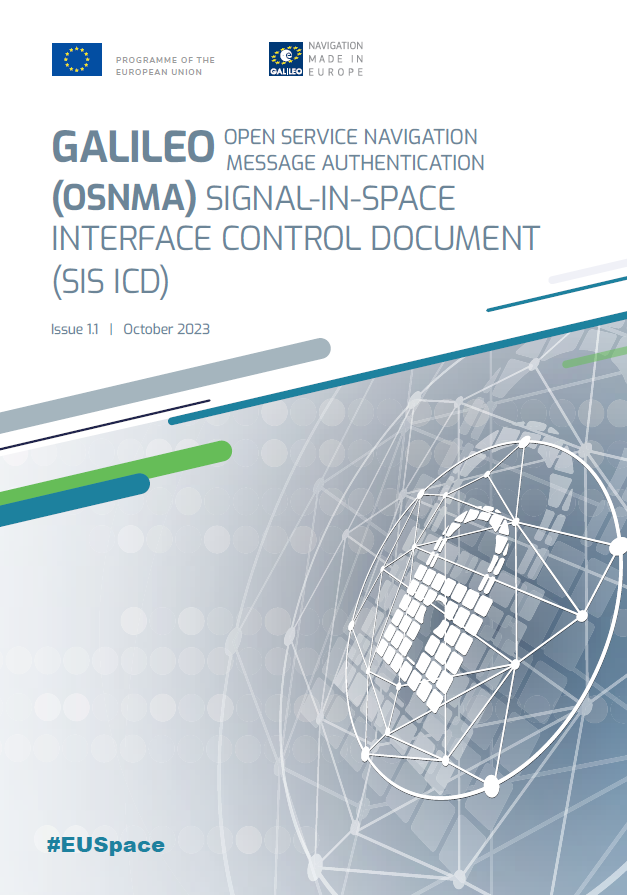An update of the Galileo OSNMA SIS ICD has been published. The main scope of this update is the inclusion of additional Message Authentication Code (MAC) sequences in the MAC look-up table. The addition of these MAC sequences was already planned and reflected in the previous OSNMA SIS ICD version (Annex C). These new sequences are the ones needed in the receiver to process the flexible (FLEX) MACs in the OSNMA signal during the on-going Public Observation Test Phase and the future service provision phase.

The European Union Agency for the Space Programme (EUSPA) together with the European Commission have published an update of the Galileo Open Service Navigation Message Authentication (OSNMA) Signal-in-Space (SIS) Interface Control Document (ICD).
The main scope of this update is the inclusion of additional MAC sequences in the MAC look-up table (Annex C). These additional MAC sequences are to be encoded in the receiver to process the flexible (FLEX) MACs of the OSNMA signal during the on-going Public Observation Test Phase and the future Service Provision Phase. As per OSNMA SIS ICD specifications, the identifier of the MAC sequence used for the broadcast of OSNMA SIS is provided in the field “MACLT” within the Digital Signature Message (DSM).
A transition of the configuration of the OSNMA SIS to a different MAC sequence will take place in the coming weeks (currently being broadcast as MAC look-up Table ID #33 and expected to be replaced by Table ID #34). This transition to a new sequence was already foreseen prior to the OSNMA service declaration and notified in the previous OSNMA SIS ICD version (Annex C). Details on the configuration change will be provided to the users as part of the on-going Public Observation Test Phase.
You can find the new version of the document in the Electronic Library of the GSC website.
Media note: This feature can be republished without charge provided the European Union Agency for the Space Programme (EUSPA) is acknowledged as the source at the top or the bottom of the story. You must request permission before you use any of the photographs on the site. If you republish, we would be grateful if you could link back to the EUSPA website (http://www.euspa.europa.eu).